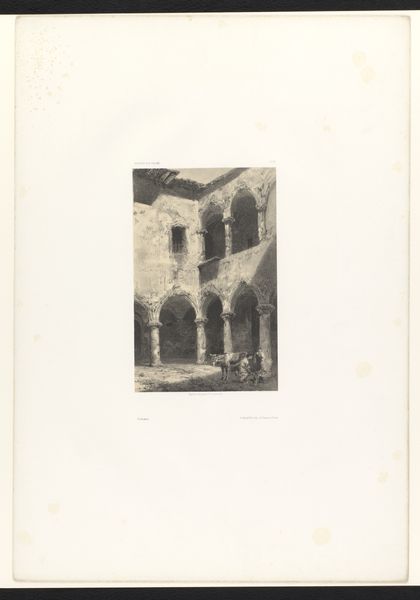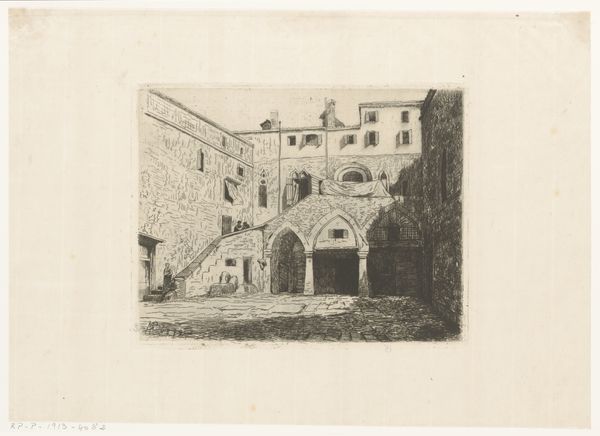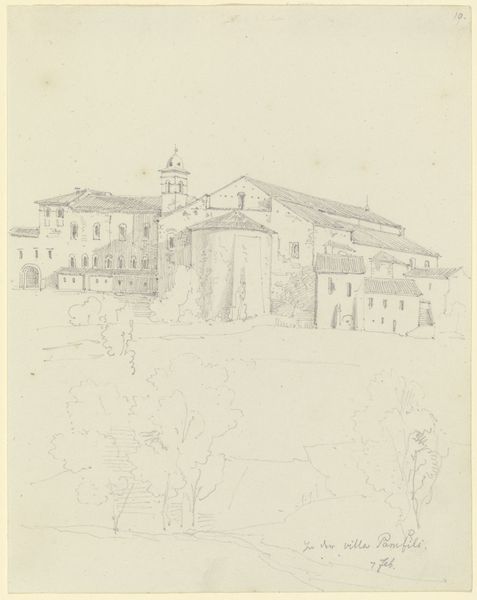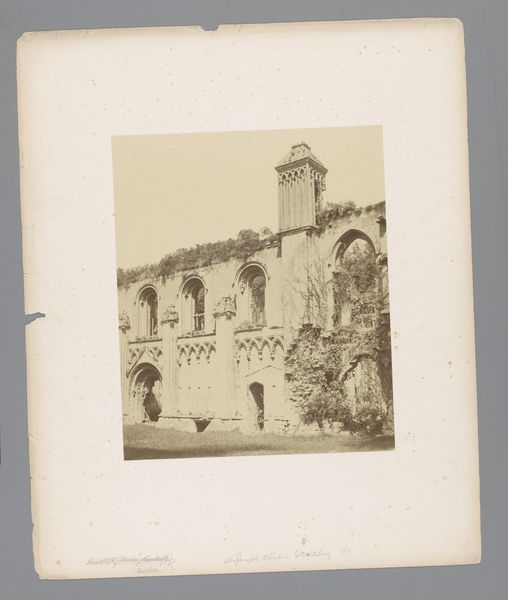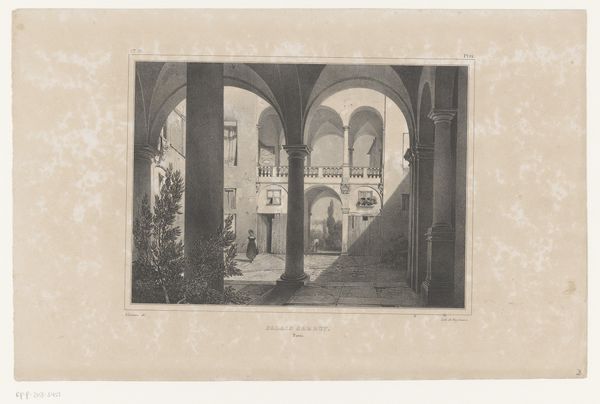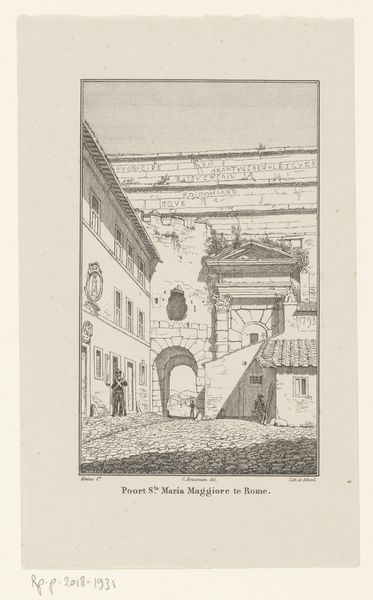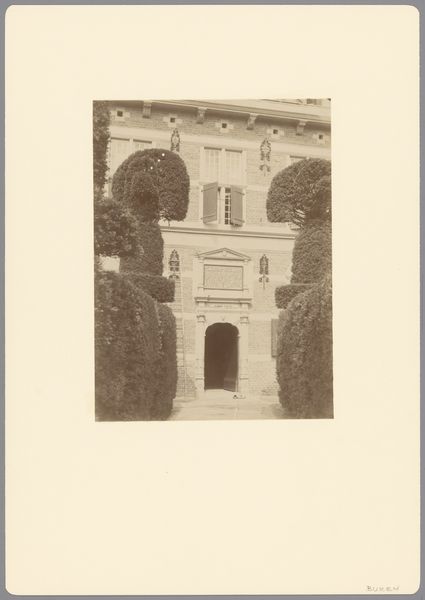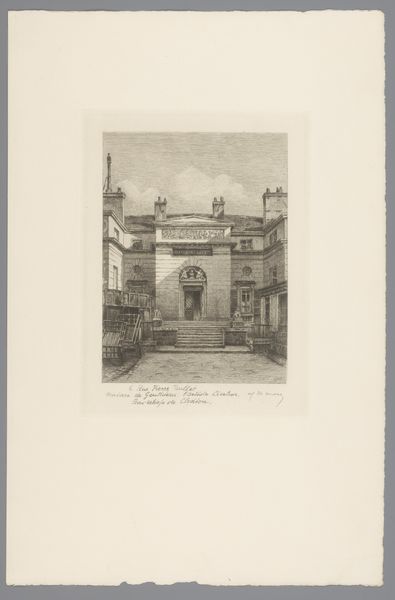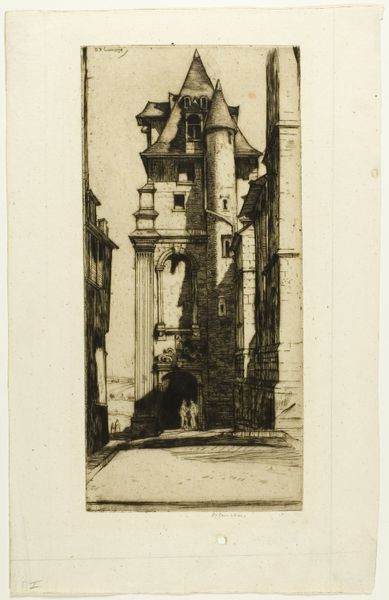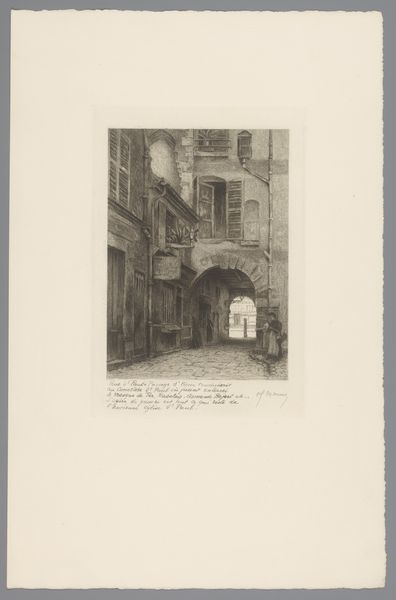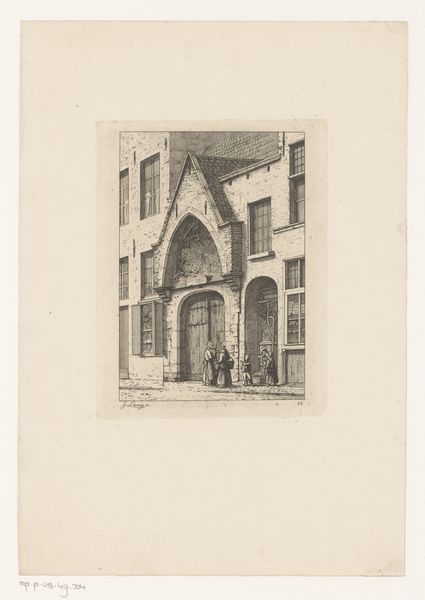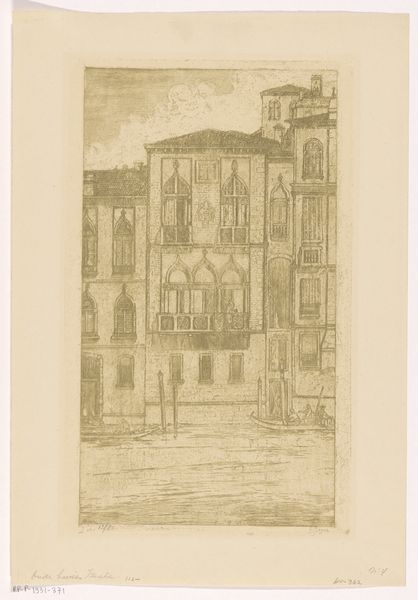
drawing, print, etching, paper, ink
#
drawing
#
ink paper printed
# print
#
etching
#
old engraving style
#
landscape
#
paper
#
ink
#
academic-art
#
realism
Dimensions: height 233 mm, width 164 mm
Copyright: Rijks Museum: Open Domain
Curator: Here we have "Binnenplaats," or "Courtyard" an etching done in 1879 by Maria van Hohenzollern-Sigmaringen, the Countess of Flanders. Editor: It has such a wonderful sense of stillness. The figures are so small within this solid, arcaded building, making it feel timeless, and slightly austere, like an etching after Piranesi. Curator: Maria, sister to King Carol I of Romania, was very engaged with supporting arts education through craftwork in Belgium. Remember, at the time, etching and printmaking had this perceived democratic nature as mediums, they're more easily disseminated. Editor: Absolutely. You see that even in the visible lines, the repetitive actions involved. It emphasizes labor in a way a painting, say, might obscure. But let's talk about the Countess, using etching, in what was typically a very male-dominated space of production at that time. Do we know anything about her access to resources? Was she using the facilities that men artists of that period did? Or were her resources specific to her status? Curator: That's really critical context. As a royal figure, art-making became part of solidifying that role within civic life, supporting social programs and institutions tied to female artistic training. So yes, her resources were undeniably linked to her aristocratic status, providing her access to the tools and, to some extent, visibility within the art world, though still working within those limitations. Editor: What intrigues me, seeing the material history laid bare, is the question of choice versus constraint. Was etching the countess's passion, or the only available avenue? Was she perhaps constrained to those forms? Did it offer certain types of flexibility because she was female, that oil painting may not have offered, given the demands to work inside studios and so on. The architectural depiction reminds me of embroidery, domestic production—this really opens up what art history and its traditional hierarchies of material, technique, and genre elide. Curator: That tension is exactly why "Binnenplaats" is compelling. She skillfully employs a reproducible medium while participating in and influencing conversations around access and the arts. Her personal access aside, this offered exposure to other women looking for similar outlets for artistic production, thereby influencing not just access but the visual culture around women at this period in time. Editor: It leaves me thinking about how labor, skill, and material converge in unexpected ways. Curator: It underscores the nuances in the production and distribution of art during periods of significant social change.
Comments
No comments
Be the first to comment and join the conversation on the ultimate creative platform.
